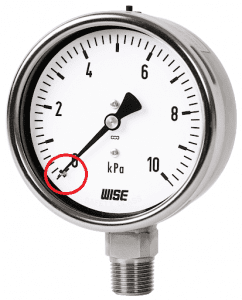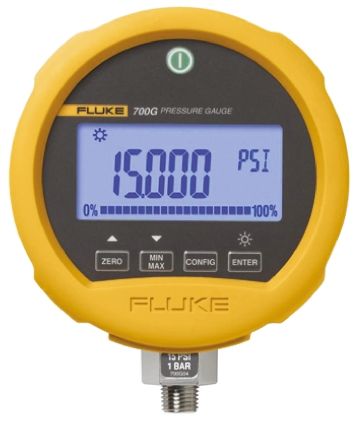Table of Contents
In the realm of industrial precision, where accurate measurements are paramount, pressure gauge calibration stands as a crucial process. Whether in manufacturing, laboratories, or other industrial settings, the reliability of pressure gauges is instrumental in ensuring safety, compliance with standards, and the overall efficiency of operations.
Why Pressure Gauge Calibration is Crucial
Ensuring Accuracy
The primary purpose of pressure gauge calibration is to guarantee the accuracy of readings. Over time, factors like wear and tear, environmental conditions, or simply the aging of the gauge can lead to deviations in measurements. Regular calibration helps rectify these inaccuracies, providing confidence in the data produced.
Compliance with Standards
Various industries have stringent standards and regulations governing the accuracy of instruments like pressure gauges. Calibration ensures that these devices meet or exceed the specified standards, making them compliant with industry requirements and regulations.
Safety Considerations
In industries where pressure plays a critical role, such as oil and gas or chemical manufacturing, inaccurate pressure readings can lead to catastrophic consequences. Calibration becomes a safety measure, preventing potential accidents by ensuring that pressure gauges provide precise and reliable information.
Common Types of Pressure Gauges
Before delving into the intricacies of calibration, it’s essential to understand the common types of pressure gauges. Bourdon tube gauges, diaphragm gauges, and piston gauges each have their unique mechanisms and applications. Knowing the type of gauge in use is the first step in crafting an effective calibration strategy.
Signs That Your Pressure Gauge Needs Calibration
Identifying when a pressure gauge requires calibration is crucial for maintaining accuracy. Inconsistent readings, physical damage, or the age of the gauge are common indicators that it’s time for calibration. Regular checks can help preempt potential inaccuracies and ensure the continued reliability of the instrument.
How Often Should Pressure Gauges be Calibrated?
The frequency of calibration depends on various factors, including industry standards and environmental conditions. While some industries may require more frequent calibration, others with stable environments may have less stringent schedules. Adhering to recommended calibration intervals is vital for sustained accuracy.
Equipment Required
Some equipment required for pressure gauge calibration.
Pressure comparator:-
Pressure comparator is similar to dead weight tester. Which generates pressure to achieve the desired pressure.

Master gauge:-
Digital gauge is used as master gauge to calibrate measuring instruments in ISO 9000 qualified laboratories. P.G.(Pressure Gauge) may offer an accuracy of ±0.1%, depends on the manufacturer.
Gauge Calibration Sheet:-
The calibration sheet is used to note the readings of the pressure gauge compared on the comparator. The example of pressure gauge calibration sheet is given below.
PG Calibration procedure
- Check at ambient pressure without connection, gauge value should be zero. If not, adjust the zero screw or pull the pointer using needle puller & put it to 0 values.





- Now connect the pressure gauge to pressure calibrator.





- Apply pressure till gauge span value & verify pressure gauge maximum pressure value should be same as standard gauge reading if not, correct the indication increase or decrease the sector arm.
- Apply pressure 50% of gauge span (for linearity adjustment)
- Adjust the length of link after pulling the pointer using puller and place at correct spot (at 50%)
- Verify linearity at check points 0%, 25%, 50%, 75% and 100% of full gauge span and fill the calibration sheet.
- Repeat these steps until correct value achieved.
Read Also:-
- Pressure Transmitter Calibration.
- DP Transmitter Calibration
- Remote seal DP transmitter Calibration
- Pressure Switch Calibration

